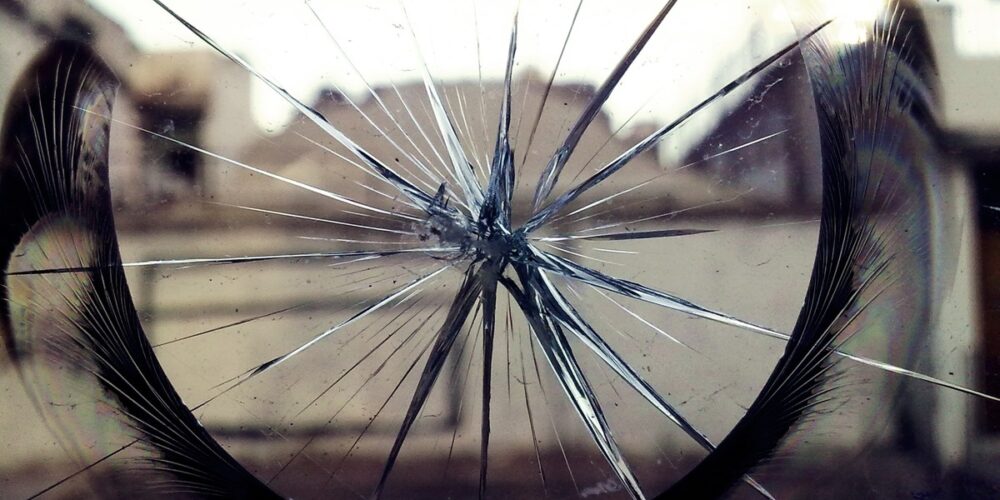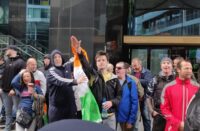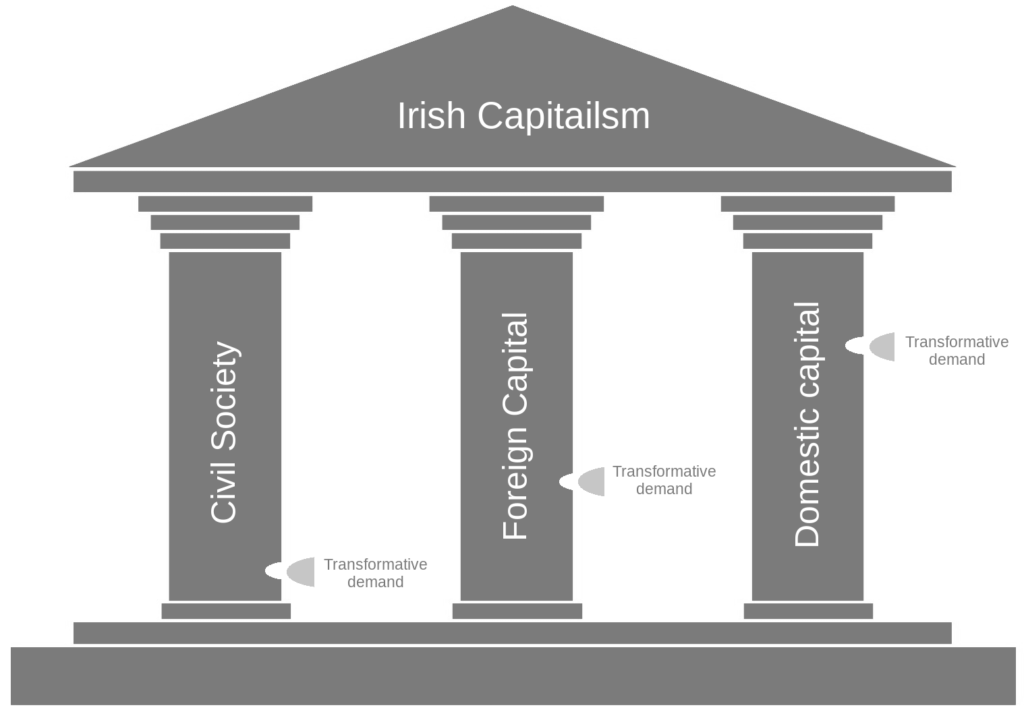In Ireland, just like elsewhere, our movement stands in front of a seemingly impenetrable wall: the great wall of capital. The unfortunate reality is that we are even further from tearing it down than we were a hundred years ago, when the last revolutionary high point of Irish history was unfolding.
A century later, after partition and the formation of the first Communist Party, we as a movement and a party continue to strike blows against this wall, which upholds a system of exploitation and increasing levels of deprivation.
Since the last global recession of 2008 the CPI has been sharpening its analysis of the contradictions within capitalism, developing the concept of the “triple lock of imperialism” and putting forward a model of a transformative strategy to help guide both our movement and working-class forces towards the progressive, democratic and ultimately revolutionary demands required to build socialism.
We have developed our understanding of the structure of the wall; but nevertheless it stands. Those with experience know that the only way to break down a solid wall using a sledgehammer is to focus all the blows on one area, at one single point, constantly and repeatedly, until sooner or later cracks appear. With repeated effort, these cracks penetrate further, to create a small hole. This point, where the weight of our effort is placed, we call the focal point.
Once a small hole emerges it releases other weak points in the wall, which can be exploited, expanding the small hole little by little as new, weaker areas along the edges become a point of focus for the hammer. Eventually everything that bonded the bricks together, the cement and the plaster, is weakened under the weight of its construction; soon big chunks of the wall fall, with every blow doing more damage than the last. Eventually the remnants of the wall collapse under their own weight, leaving only rubble, to be swept away to make room for the future.
Spontaneous and erratic blows against a wall will cause cosmetic damage without damaging the structural integrity of the wall.
So it is with capitalism. A centre-left government, a handful of Marxist TDs or even strong concessions in the spheres of housing or health amount to striking welcome chunks of plaster off the wall; yet the integrity and stability of the structure remains as long as the blows are not focused.
To collapse the entire capitalist structure we must start with specific targets, conscious of where we strike, and in doing so focus our effort on the weakest point. We must apply our resources, energy, time and effort to focusing our blows on those points that have the greatest chance of weakening the overall structural integrity of the capitalist system, thereby creating further fractures and weak points that can be targeted over time.
When we think of the task of dismantling the capitalist system in Ireland it seems daunting, undoable, even demoralising. It is like standing in front of a seemingly impenetrable wall. For decades, many strong blows have been struck, sometimes consciously and sometimes spontaneously but not consciously and consistently by an organisation and a popular movement of the working class. These blows must be both consciously and consistently delivered if there is any hope for the future.
Fortunately, the ground on which capitalism rests is inherently unstable. On the one hand it is prone to tremors, as the very system is built on tectonic plates of contradictory and antagonistic class forces, while on the other hand the global environmental crisis threatens to erode the very soil on which the whole capitalist system is built. Both these forces continue to present us with new cracks.
The existing structure of capitalism in Ireland is dependent on a number of concrete historical formations, the three most important of which are civil society, foreign capital, and domestic capital. Instead of a monolithic wall we can think of Irish capitalism as a structure that stands on these as three distinct pillars, as seen in the acropolistic fig. 1.
Civil society constitutes the particular institutions beyond the state that enable the capitalist mode of production to be produced and reproduced. The second pillar, the structure of international capital, refers to the role of foreign capital, which penetrates the economic and social fabric of society. This is largely determined by the triple lock of imperialism, identified by the CPI as binding the people of Ireland to the often contradictory interests of the EU, British and US imperialist blocs.
The third and final pillar is the structure of domestic capital, with the hallmark of dependence, servitude and parasitism that has contributed to the stunted and uneven development of a large-scale indigenous industrial base.
If we think of capitalism as it exists in Ireland as a structure that rests on these three pillars we begin to realise the enormity of the task; but conversely we also find that we have defined the tangible points of focus. The question that arises is, Where do we focus the blows of our hammer? The answer to that question depends on a strategic assessment of the CPI’s capabilities as well as the structural integrity of each pillar. Existing and emerging cracks in the pillars will determine the types of steel wedges we should forge, and these in turn will determine where we should focus our blows.
Some pillars may have substantial cracks, for which we could craft large wedges in the form of transformative demands; but without the requisite force to drive those wedges this amounts in effect to sloganeering. Other pillars may have small, marginal and isolated fractures, which may be easier to forge and drive wedges into, but these in turn have little hope of causing damage to the structural integrity of the pillar or expanding to meet other small cracks.
To answer this question, “Which is strategic rather than political?” we must evaluate the position of class forces in society, our own areas of weakness and strength, and make a decision on how we can best plan our campaigns in the months and years of struggle that lie ahead. The worst thing that we, and the rest of the Irish left, can continue to do is disperse our blows along different pillars at different points—expending much energy but achieving little.
In short, we need a focal point towards which to direct the weight of our effort. As the CPI prepares for its 26th National Congress it will be setting those strategic objectives.
■ Next month we will discuss some fissures in these pillars, as well as some wedges or transformative demands that we believe are important to consider.







